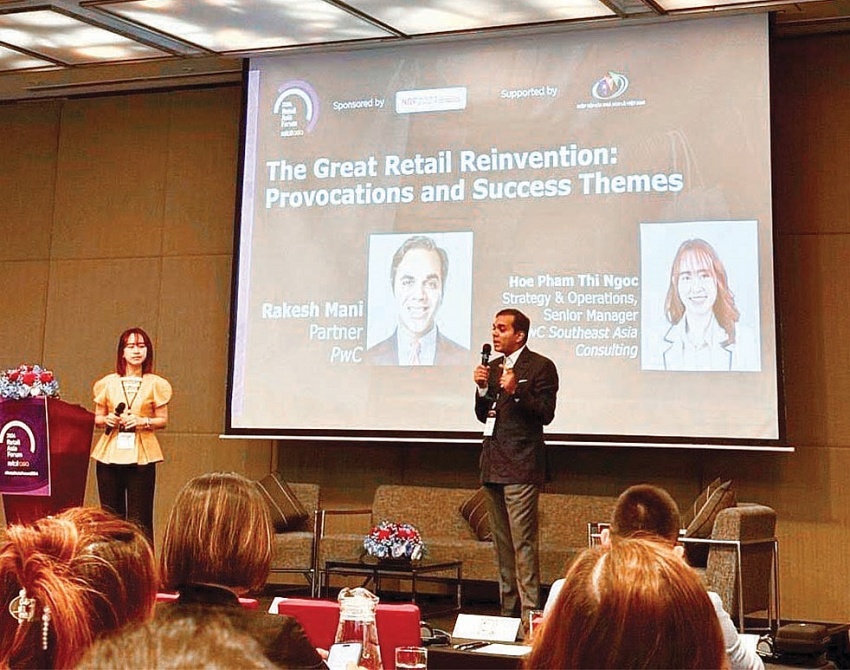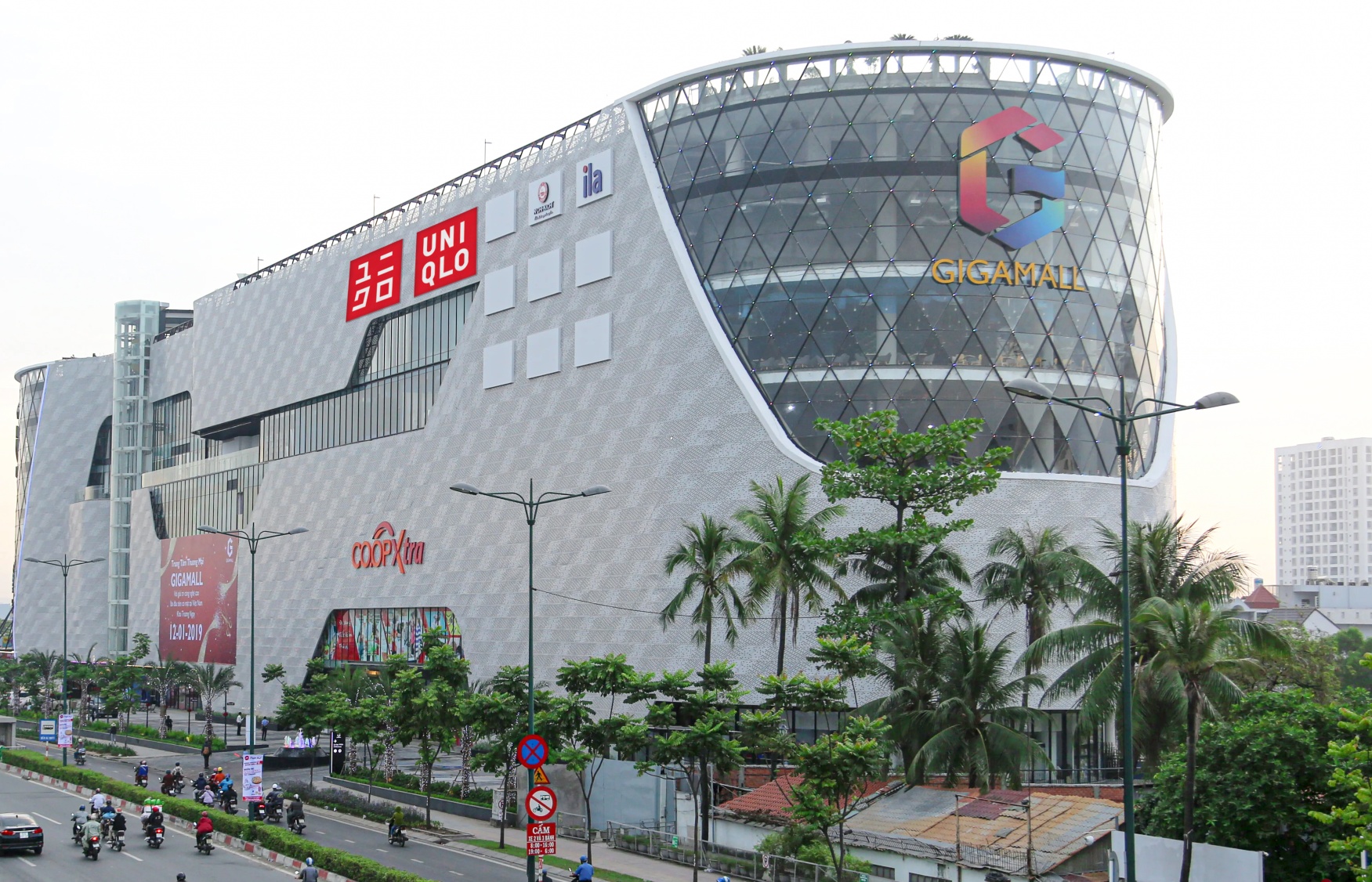Business model reinvention a priority for all retailers
 |
| Rakesh Mani, sector leader for Retail and Consumer in South East Asia and partner at PwC South East Asia Consulting |
Rakesh Mani, sector leader for Retail and Consumer in South East Asia and partner at PwC South East Asia Consulting, touched on how strategic improvements in infrastructure and ecosystems could elevate Vietnam as a premier cultural force in the region with VIR’s Luu Huong.
Given the current economic climate, how is inflation influencing consumer spending behaviours in the retail sector, and what strategies should retailers adopt to address these changes both in Vietnam and globally?
Inflation is one of the dominant forces shaping consumer behaviour today, exerting pressure globally, regionally and in markets like Vietnam too. With cost-of-living increases, a basket of essentials such as groceries and household items consume a larger portion of household incomes, and shoppers are pushed to become more discerning in their purchase decisions.
This greater value-consciousness is leading consumers to delay non-essential spending, compare prices more diligently, seek out promotions and - in cases where brand engagement and value is weaker - perhaps also trade down to more affordable product tiers to extend their disposable income.
This behaviour reflects a broader trend but there are nuances to this - with metrics such as affluence, age, and perceived economic confidence all playing a role to influencing the extent to which these broader trends take hold in individual consumer behaviours.
To respond, retailers have their work cut out for them, In the near-term, this would involve tailoring promotions strategies, adjusting assortment and product mix, and evaluating more relevant market propositions - but longer-term, the challenge is to reinvent with a right to win that deepens customer experience and loyalty and a differentiated value proposition and capabilities.
As e-commerce continues to gain traction among consumers for its convenience and efficiency, how do you see this trend affecting traditional retail?
The surge in e-commerce adoption marks a pivotal transformation within the retail sector, propelled by the allure of convenience, delivery, and streamlined online payments. This is increasingly becoming a dominant aspect of the retail landscape, promising to occupy a larger share of the market, helped greatly by the strong penetration of smartphones across the region.
However, we also have to recognise that the impact of e-commerce varies significantly across different market demographics and categories. In many areas, traditional trade remains robust, particularly outside younger demographics and among those with lower income levels, where e-commerce penetration is less pronounced.
The path to broader e-commerce adoption involves not only enhancing consumer trust in the online shopping experience, including quality assurance and the ease of returns and refunds, but also requires e-commerce platforms to achieve a scale that makes the economics of supply chain and logistics viable.
For retailers, we see greater focus going forward on digital marketing to engage consumers on their smartphones, build brand visibility, promise, and loyalty while simultaneously sharpening their omnichannel strategies and investing in their supply chain capabilities to be more nimble in an omnichannel world.
 |
| Photo: Le Toan |
In the context of economic challenges and competitive pressures, how are e-commerce platforms navigating the complexities of online and in-person sales?
We are seeing a dual mode of operation, where consumers actively engage in both online and physical stores. So, essentially, many are using both for different purchase occasions and categories in different places, which can be complicated.
In response, retailers are increasingly adopting related strategies that blend digital convenience with the tactile experience of physical stores. This approach caters to diverse purchasing motivations, from the need for physical interaction with products to the convenience, price comparison possibilities, and savings found online, indicating a strategic move towards a hybrid retail model that can flexibly respond to changing consumer preferences and economic conditions.
Some of our consumer survey data also suggests though that there is still some wariness with online purchases, with consumers having concerns about product quality and ensuring they are getting what they think they are buying. So there are still some bridges to cross in that respect.
How can traditional and smaller retail formats remain competitive amid the rise of large-scale stores and e-commerce platforms?
Like any other business, traditional and smaller retailers can leverage their strengths and adapt to the evolution in their core consumers’ preferences.
Understanding the customer base is paramount. For smaller retailers, particularly “mom and pop” shops, their entrenched position in local communities and personal relationships with customers provide a great starting point. They can build on the local familiarity and connectivity - often stretching across generations - that make them special, offering tailored assortments and maintaining the personal touch that is harder for large-scale players to replicate without a great deal of personalised digital engagement..
Considering the unique retail dynamics and trends in Vietnam, what future merger and acquisition (M&A) trends do you foresee in the Vietnamese retail sector?
I find the Vietnamese landscape to be quite dynamic and vibrant - with lots of energy for experimenting with new products, platforms, and channels. So on the one hand, we have this dynamism and willingness to embrace innovation, while on the other, still a considerable traditional trade channel, particularly outside major cities. Over the coming years, we will likely see modern retail take on greater share, which is a huge opportunity.
In terms of M&As, I think Vietnam has already witnessed a commendable influx of foreign investments, with retail players from Thailand, Japan, and many others establishing a strong presence. I would expect to see continued interest in investment into the retail sector: as the economy continues to grow as rapidly as it has been, and the organised retail sector continues to expand, there will be many that would be keen to participate in that story, whether organically or with strategic investments.
Domestically too, with existing operations, we will continue to see strategic investments that enhance distribution and logistics capabilities. But where we might see a great surge in investment is into new technologies. This could take numerous exciting forms: from augmented and virtual reality to scan food for allergies or drive enhanced in-store customer experience; to applying AI to understand in-store consumer paths and facial expressions or to support dynamic pricing. It could even be used in robotics to take over some in-store tasks such as cleaning or re-stocking. The possibilities for the future really are endless.
Can you provide insights into the kinds of initiatives PwC Consulting is advising its clients on, including the impact of transformations on operational efficiency and customer engagement?
It’s no secret that the retail sector is undergoing a period of significant change and reinvention, with a major focus on digitalisation across various operational and growth aspects. Our efforts are geared towards helping retailers harness technology to reinvent in many different ways.
There are a range of efficiency and effectiveness plays to best position for reinvention and capture the possibilities that lie ahead, from reviewing revenue management levers across pricing and promotions to tighter digital-enabled procurement and upgrading systems that go with it. Driving greater customer loyalty can also be achieved through personalised digital engagement, sharper financial management and reporting, and leveraging data management and analytics in a more powerful way, all with AI capabilities embedded.
In light of Vietnam’s efforts to attract mega-events and celebrities to bolster its tourism and retail sectors, what strategic advice would you offer to Vietnam to enhance its infrastructure and leverage cultural trends for economic growth?
It’s an exciting time, with the breadth of cultural activities that are generating such passion and interest across the region. Yes, Taylor Swift was recently in Singapore but also various other artists from within Asia. K-pop and K-dramas are a phenomenon in the current zeitgeist. Then we had movies too, like Barbie, with all the brand collaborations that it triggered.
The consumer engagement and retail spending, even just on merchandise, that accompany these are pretty incredible and represents an interesting blurring between shopping and entertainment, which perhaps we will only see more and more of in the years to come. So I agree that it is an important and emerging area of interest - for brands, retailers, and countries too - in thinking through their approach and engagement models to authentically position against this.
When we advise companies, we encourage them to invest in differentiating capabilities, focus on critical things that they can do really well, and build around that in terms of market focus and value proposition.
Perhaps just one example is that I’m always floored by the ingenuity of Vietnamese cuisine when I’m here, and think it has great potential around the world. The world is increasingly more drawn to Asian influences, as we have seen with K-pop in recent years. Earlier we saw it with the great influence that India’s film industry had in growing that nation’s soft power, exporting stories and musicals to different corners of the world, and also attracting interest and investment into the country.
At its core though, I suppose it is about rallying around a few areas, building supporting ecosystems and structures around it, and letting natural dynamism work its magic.
 | Japanese retail businesses want to expand in Vietnam 100 per cent of Japanese retail businesses in Vietnam have expansion plans, according to a Survey on the Status of Japanese Enterprises Investing Abroad in the fiscal year 2023. |
 | Digital forays headline 2024 retail sector Vietnam’s retail sector is poised for a diverse recovery in 2024, driven by shifts towards essential goods, health products, and digital transformation. |
 | Dutch firm extends partnership with PTSC G&S to support Vietnam's offshore wind sector Dutch offshore survey firm Fugro announced on March that it has extended its MoU with Vietnam's PTSC Geos & Subsea Services Co., Ltd (PTSC G&S) to meet Vietnam’s strong demand for geophysical, geotechnical and metocean data services. |
What the stars mean:
★ Poor ★ ★ Promising ★★★ Good ★★★★ Very good ★★★★★ Exceptional
Related Contents
Latest News
More News
- From compliance to strategy: ESG criteria gaining ground (September 29, 2025 | 15:47)
- Vietnamese firms step up ESG game (September 23, 2025 | 15:26)
- Vietnam tax and legal changes set to shape foreign investment landscape (September 16, 2025 | 13:46)
- Vietnamese businesses navigate US tariffs (June 25, 2025 | 12:14)
- The impact of cloud, AI, and data on financial services (April 14, 2025 | 11:20)
- Vietnam 2025 M&A outlook: trends, deals, and opportunities (March 21, 2025 | 08:54)
- Vietnam's M&A landscape mirrors global trends (February 18, 2025 | 17:13)
- Asia-Pacific CEOs enter 2025 with optimism and caution (February 06, 2025 | 17:16)
- Proposed changes to interest deductibility rules may be welcomed by taxpayers (January 22, 2025 | 09:23)
- PwC Vietnam holds Hack A Day 2024 to nurture IT and cybersecurity talents (November 14, 2024 | 12:24)

 Tag:
Tag:

















 Mobile Version
Mobile Version